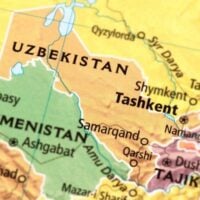Deadline: 26 May 2020
The U.S. Department of Health and Human Services (DHHS), Centers for Disease Control (CDC) is seeking applications for its Reducing the burden of parasitic infections in the United States through evidence-based prevention and control activities.
The purpose of this NOFO is to reduce the overall burden of selected parasitic infections in the United States through public health practice and disease control activities. There are two components in the NOFO that address different parasitic infections, they are: Chagas disease and soil-transmitted helminths.
This NOFO will continue the work of the Division of Parasitic Diseases and Malaria in CDC’s Center for Global Health to strengthen health care providers’ understanding, identification, treatment and prevention of parasitic infections in the U.S. One component of this NOFO will focus on using existing data to develop and disseminate strategies, educational tools, materials, and guidelines related to Chagas disease diagnosis and management in the United States to: improve healthcare provider knowledge and practices, increase testing and improve management of persons with or at risk of infection with the parasite that causes Chagas disease, increase awareness, availability and use of best practices, education training tools and materials. The other component of this NOFO will focus on the ongoing, public health practice and disease control activities receiving congressional funding to investigate and address infections with soil transmitted helminths in areas of Alabama and Mississippi where these infections have historically been endemic through testing, treatment and health education. Successful strategies should have the potential to yield high impact public health outcomes, reach a high proportion of those at risk, and have the highest potential for significant impact on population health.
Outcomes
- Component A: Chagas Disease
- Improved parasitic infection-related preventive health knowledge and practices among HCPs
- HCPs better able to recognize signs and symptoms of parasitic infections and patients for whom testing for parasitic diseases should be considered
- Increased availability of best approaches and recommendations for the diagnosis and treatment/care of patients with parasitic infections
- Improved availability of health education training tools and materials for physicians, patients, and the community for parasitic infections
- Enhanced local capacity in health departments and healthcare centers to identify control and prevent parasitic infections
- Component B: Soil-transmitted Helminths
- Improved parasitic infection-related preventive health knowledge and practices among HCPs
- HCPs better able to recognize signs and symptoms of parasitic infections and patients for whom testing for parasitic diseases should be considered
- Increased availability of best approaches and recommendations for the diagnosis and treatment/care of patients with parasitic infections
- Improved availability of health education training tools and materials for physicians, patients, and the community for parasitic infections
- Enhanced local capacity in health departments and healthcare centers to identify control and prevent parasitic infections
- Developed prevention and control programs for communities with laboratory-diagnosed cases of STH infection
- Results of epidemiologic investigations, surveillance methodologies, impact and trend analyses are available
- Improved understanding of STH prevalence and characteristics of at-risk communities among healthcare and public health personnel
The following intermediate outcome will be completed by the end of the period of performance:
- Component B: Soil-transmitted Helminths
- Improved HCP and community awareness of STH through the evaluation of prevention and control programs for those communities where STH activities have been implemented and through dissemination of epidemiologic investigations, surveillance methodologies, impact and trend analyses.
Funding Information
- Component A: up to 3 awards, average year one award amount; $100,000
- Component B; up to 4 awards average year one award amount; $600,000
Target Populations
- Component A. Chagas Disease – Individuals of all ages are at risk of Chagas disease in the United States.
- Component B. Soil-transmitted Helminths – Soil-transmitted helminths have historically impacted rural communities in the southern U.S., especially Alabama and Mississippi. Soiltransmitted helminths applicants should clearly identify the geographic areas they will serve in Alabama and Mississippi in their application
Eligibility Criteria
- Private institutions of higher education
- Small businesses
- Special district governments
- Nonprofits having a 501(c)(3) status with the IRS, other than institutions of higher education
- Nonprofits that do not have a 501(c)(3) status with the IRS, other than institutions of higher education
- City or township governments
- State governments
- Public housing authorities/Indian housing authorities
- County governments
- Independent school districts
- Native American tribal governments (Federally recognized)
- Public and State controlled institutions of higher education
- For profit organizations other than small businesses
- Native American tribal organizations (other than Federally recognized tribal governments)
For more information, visit https://www.grants.gov/web/grants/view-opportunity.html?oppId=322341









































